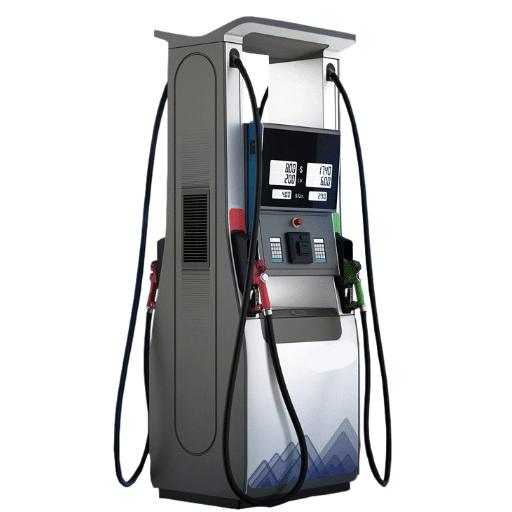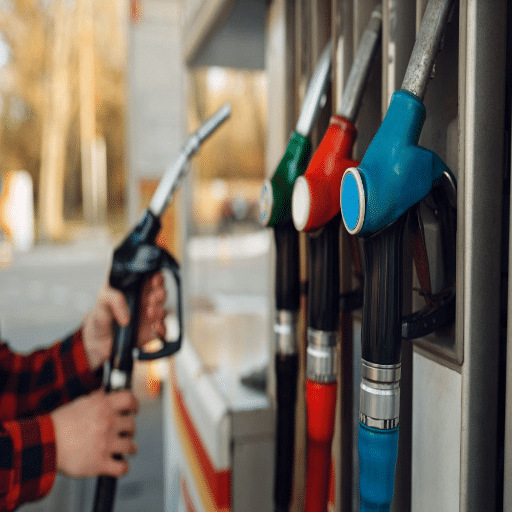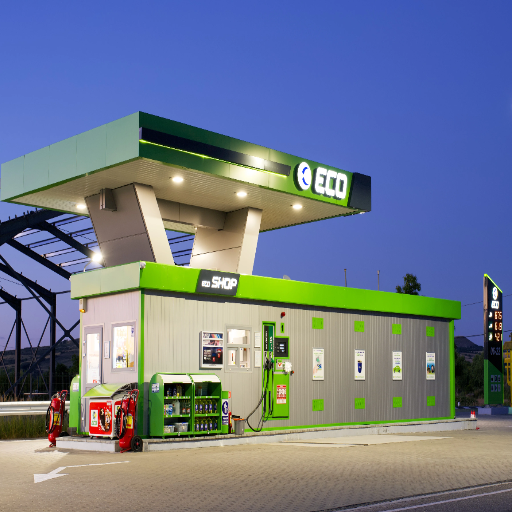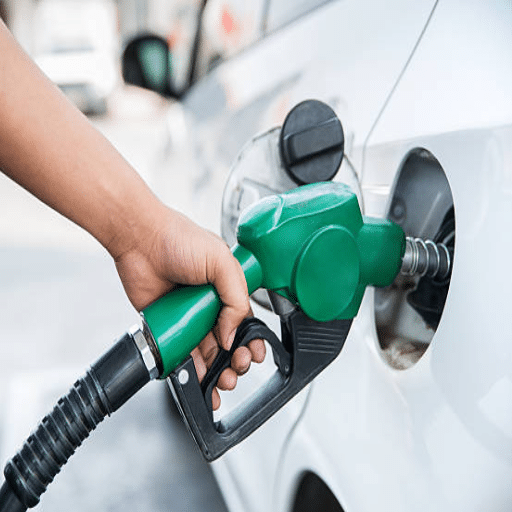No question, blocked fuel dispensers can be one of the most annoying and expensive problems, whether at the gasoline station or in working operations with fuel in an industry. In addition to the disturbance of any operation, they may cause delays and additional expenses if they are not eliminated within a considerable period. What steps can you take to address fuel dispenser blockages? Read on and learn how to resolve a fuel dispenser obstructing the natural flow of fuel. From the basic principles of the causes of closure of pathways to the advanced steps in problem solving that prevent their occurrence, they will be provided to promote the smooth operation of the fuel system. Whether you run your own business, are in the field, or simply find this system fascinating, you will learn how to handle this problem easily.
How Can You Identify a Clogged Fuel Line?
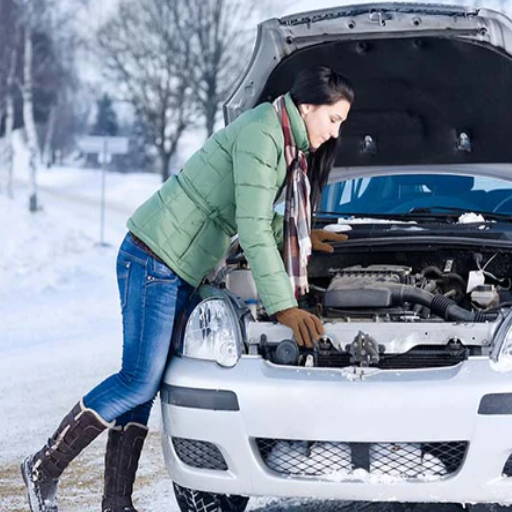
One can define a clogged fuel line if symptoms indicate a lack of proper fuel flow. These particular indications can be underperformance, an engine failing to operate even when it would start, a long time to start, and many others. The fuel injection system would not fail to impress, as you could also experience some non-smooth car operation, which people sometimes call hiccups. Checking the fuel line for visual obstructions such as kinks or holes, leaking pressure, or castor oil codecs, and the worn/roasted lines themselves, one would succeed in locating the problem. It is like throwing the baby out with the bathwater, or call it an inspection of the blockage in the fuel ducts. It fails due to the deadlocked fuel line, so it needs to be tested harder again by a different method, which is quite effective: the fuel pressure detection meter.
What Symptoms Indicate a Clogged Fuel Line?
A clogged fuel line can destroy your car’s engine performance in a snap. Yes, it results in low fuel efficiency and exhaust failure. One particular symptom of this problem during the ride is losing engine power. Specifically, when speeding up. The required fuel is not being driven into the combustion chamber. You may also be unable to start your car or experience abrupt jerks when the engine goes off due to an unsteady availability of fuel, which hinders the ignition process. Also, you wait as the speed fluctuates, creating a rough effect… or the engine works properly and then comes to an unexpected stop.
Professionals affirm that in some situations, if circumstances permit, the fuel lines could be jammed, which may increase the loading on the fuel pump and eventually result in its failure. There is a generally accepted standard in logging automobiles, according to which the fuel pressure of most motor vehicles ranges between 30 and 60 PSI, depending on the brand or models of the car, and auto scan tools can reveal this. A higher amount can give out signs of fuel blockage. Regular upkeep of a vehicular system, including the neglect of this system, with the extinction of the filter, which is extensively used in removing dirt from the fuel tank, is necessary.
How to Check for Blockages in the Fuel Line
Visually Examine the Fuel Lines: Approach the fuel lines critically. Scan for fraying, surface cracks, or unexpected bends that restrict flow. Pay special attention to the fitting nuts; corrosion or loose threads can create an immediate leak once the engine runs.
Inspect the Fuel Filter: The filter collects contaminants before they reach the injector nozzles. Detach the cartridge and look for a telltale sludge blanket on the screen. If that debris layer is pronounced, swap in a fresh part. Owners’ manuals generally suggest a change interval between twenty and thirty thousand miles, although driving conditions can stretch or shorten that window.
Confirm the Fuel Pressure: Fuel pressure is checked with a handheld gauge clamped onto the rail port. Turn the key to the run position, note the reading, then crank the engine if necessary. Most passenger vehicles expect the needle to land between thirty and sixty pounds per square inch. A figure beneath that threshold hints at either an obstructed line or a weakening pump motor.
Blow Out the Lines: A suspected obstruction in the fuel line often becomes evident during routine service. Detach the suspect hose, apply compressed air, and watch for debris to clear. Always relieve pressure from the fuel system first; failing to do so can result in an unexpected spray.
Inspect the Fuel Tank: Small particles can settle at the bottom of the fuel tank and migrate into the lines with time. Shine a bright flashlight through the fill opening for discoloration or flakes. Draining and cleaning the tank usually proves prudent if the fuel has aged.
Run Diagnostic Tools: Onboard diagnostics (OBD) often flag fuel-related troubles before the driver notices a symptom. Plug in a scanner and retrieve the stored codes; P0171 and P0174 point to a lean mixer that may stem from restricted delivery. Addressing the’ root cause of such codes early can save time and expense.
Taking the outlined actions not only pinpoints a blockage but also restores confidence in vehicle performance. Protective gloves, eye shields, and good ventilation remain essential companions whenever gasoline or pressurized fumes are present.
What Tools Are Needed to Unclog a Fuel Line?
When it comes to cleaning the fuel line effectively, one has to have the following at the ready:
Fuel Line Disconnect Tool: This tool is handy when disconnecting the fuel line without causing harm.
Fuel Injector Cleaner or Solvent purges the fuel system of dirt or obstructions.
Air Compressor and Air Nozzle: These blow pressurized air into the fuel line to capture blockages.
Clean Rags and a container: These assist in containing the filth and any possible spillage during the cleaning.
Protective Gear: Always wear safety gloves and a face shield, and keep fuel and cleaning agents in a ventilated area.
This provides a means to properly clean up the obstruction in the conduit and improve the regular flow of fuel into the motor vehicle. As more details will be provided throughout the repair, do not try to refer to the manual only halfway through the process.
What Steps Should You Take to Clear a Blocked Fuel Filter?

Identify the Fuel Filter—The related instructions manual will explain where the owner should expect to see the part. The fuel filter is usually found within the fuel line or gas tank.
Release Fuel System Pressure – To make things safe, it is advised that the electric drive is switched off and the petrol residual is released to eliminate the dangers of spillage.
Cut off the Fuel Connections—It’s essential to disconnect the lines without damaging the filter. In a spill, the liquid should be collected in a spill bucket.
Uninstall the Current Filter—Remove the fuel filter clogging the system by ensuring the new one remains in the same orientation.
Put in the Most Recent One – Fix the new fuel filter in the right direction and tightly slip the lines back to their positions.
Examine for Leakage—After reconnecting the battery, the fuel distributor is reinstated, and the conduits are inspected to verify no leakage before engaging the engine.
These steps will guide you in adequately replacing a clogged fuel filter while ensuring the vehicle’s seamless functioning. If in doubt, always take precautions and refer to a competent person.
How to Remove and Replace a Fuel Filter
When replacing fuel filters, the first step is to eliminate the fuel pressure using either the valve provided or one of the effective methods, as this will prevent the fuel from spraying. Then I would detach the car’s battery to ensure no one touches it while looking for and getting the fuel filter. Once that is done, I untangle the fuel lines and pull the existing filter, replacing it with a new one. The next step is adding this new filter, removing it from the will-like one, putting it opposite this one, and joining the fuel lines before re-assuring the correct fuel pressure is there. Before turning on the engine, I realise the fuel might have to be tested for leaks.
When Should You Post a New Fuel Filter?
Usually, car service experts recommend changing the fuel filter in about 20,000 to 25,000 miles. However, distance ranges for different models and types of cars and their various conditions can highlight recent everyday journeys. It is significant when new sensations occur while driving the vehicle, or specific events could affect the car’s systems. For example, one feature of a fuel filter upgrade is that it reduces engine performance, prevents the engine from starting, causes engine stalls or noise from the engine, or burns. Most importantly, the fuel filters undergo reductions in fuel flow, and the system should be checked often because its effect is broadened to go beyond the engine, and areas in the system would begin to experience failures due to the blocked fuel filter. Always refer to the manual for more guidance; it explains everything and gives considerable advice.
Can You Clean a Clogged Fuel Filter?
Unblocking a clogged fuel filter is sometimes possible, but it heavily depends on the fuel filter type in a particular car. To take a classic example, some older cars boasted metallic or reusable fuel filters that could be unstuck using special cleaners or air under pressure to unclog the filters from the trash. However, in each case, there was a lot of care taken into how the process was completed, to avoid the destruction or the disruption of the internal parts of the filter; moreover, the same extra special attention was also paid to the protection of the other, already cleaned type filters like that.
Conversely, a varej is a fuel filter made of paper or other material. It is a replaceable filter, often used by most fuel companies or machinists nowadays, intended for one-time use only. They should be unnecessary when backed up, since they can become inefficient in performance. Bani believed such cleaning was the worst practice that could lead to neglect and direct damage to the fuel filter.
One cannot forget that delayed maintenance of the diverted fuel injector leads to a fuel waste of about 20% and probably more, especially if the engine is old. Besides, pollutants are increased, and the fallopian tubes are under a lot of pressure. The car has a fuel system, and the filter should be changed to ensure it is safe to drive.
How Do You Troubleshoot Issues with the Fuel Pump?
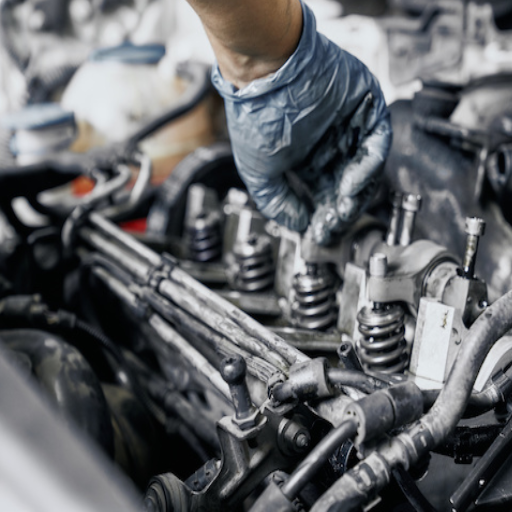
Start by looking at the symptoms that the fuel pump exhibits. Often, people consider such things as when the engine is started, it is hard to start or will not start at all, chokes and dies due to the engine’s inability to sustain itself or start up, which may lead to low mileage per litre. Any sound, be it a click in the fuel cell, denotes fuel being pumped.
It is also essential to apply a pressure gauge to help check the fuel pressure so that the reading can match or fall within the guidelines of the manufacturer’s primary instructions. The fuel pump’s relay switch and fuse are usually the parts that make the fuel pump fail, and they should be examined for damage or wear and tear. They must also check the fuel line with the fuel filter for any obstructions, out-gases, or leaks that would affect the steady running of the fuel supply.
If no irregularities are seen, one may have the pump examined or changed by a qualified provider so that all the appropriate tests can be run and the pump replaced.
What Causes a Fuel Pump to Clog?
When a car experiences a vapor lock, it is good to know that many things could have caused it, such as debris and contaminants, or poor fuel quality. Unsurprisingly, if the fuel tank eventually becomes filled with dirt, rust, or sediments from the fuel, those deposits will likely block the fuel pump components. Contaminated or low-quality fuel is the usual suspect in such cases because the fuel most often includes additives that tend to block the pump. However, a larger culprit is that the fuel filter is not changed as required, which allows dirt to flow with the fuel into the pump, increasing the chances of rubbish building up, to avoid the clogging.
Upper, also known as chemical components, many people would like to see the seizure reasons during and/or after fuel use in the pump, especially vehicles that were never intended to use that fuel. This is because ethanol absorbs the liquid moisture in the environment and fuel, and that accumulation may lead to the creation of corrosion, which blocks the fuel flow. In such a situation, in a vehicle, this issue may be heightened by not using the car for some time because even the standing fuel can have the risk of breeding sediments in it. However, it has been noted that the likelihood of fuel pump clogging for vehicles fueled with good quality fuel and appropriate maintenance, complemented by filter replacement and tank cleaning, is a remedial postulation.
How to Fix a Malfunctioning Fuel Pump
Confirm the Issue: Confirming a suspected fuel-pump failure begins with careful observation. Drivers frequently report symptoms such as sputtering under load, stubborn no-start conditions, and unexpected loss of throttle response; a whine emerging from the fuel tank may add further suspicion.
Inspect the Fuel Pump Relay and Fuse: Before committing to a costly pump assembly, technicians often inspect the relay and associated fuse. Both components are small and inexpensive and can eliminate the problem in moments if corrosion or heat damage is present.
Test Fuel Pressure: Pressure gauges inserted at the service port deliver complex numbers, reassuring or dismissing the technician. Comparing that figure against factory specifications provides a clear pass-fail verdict on the pump.
Clean or Replace the Fuel Filter: A compromised filter can imitate pump distress, starving the engine while misleading the technician. Swapping in a fresh element or flushing a metal canister may restore functionality without further disassembly.
Access and Replace the Fuel Pump: When replacement becomes unavoidable, the pump is usually housed within or atop the tank. Safely relieving line pressure, disconnecting the battery, and lowering the tank step-by-step ensures no spark meets spilled fuel, an omission detailed in the vehicle’s service manual.
Reassemble the assembly, torque all fasteners to specification, and inspect each joint for signs of leaking fluid. A brief road test will confirm that everything operates as it should and that pressure is stable.
Should the task feel outside your comfort zone, a qualified mechanic can carry out the work and catch any hidden issues before they worsen.
What Are the Signs You Need to Replace Your Fuel Pump?
Catching a faltering fuel pump in its earliest stages can spare a driver from expensive repairs or a roadside breakdown. The following symptoms signal that the pump’s reliability is in question.
Engine Sputtering at Highway Speed: A sudden sputter or complete stall while cruising on the interstate usually means that fuel no longer reaches the combustion chamber with the force the engine demands. Such inconsistency robs the power train of momentum and leaves the driver momentarily helpless.
Difficulty Starting the Vehicle: On cold mornings, or sometimes in the middle of the work week, the starter may click, and the engine may cough, but no gratifying roar follows. That reluctance almost always traces back to a pump that no longer builds adequate pressure, and if left untreated, the car will eventually yield a single silent ignition.
Loss of Power During Rapid Acceleration: A driver who floors the pedal yet feels only a sluggish lurch has probably discovered a pump that cannot match the throttle request. That lag hints that the inside components are aging and losing hydraulic strength.
High-Pitched Whine from Beneath the Floorboards: Most modern pumps emit a steady, barely audible hum, yet a piercing whine or howl from the fuel tank hints at rotor drag or internal wear. Ignoring that crescendo is roughly the same as ignoring the first crack in a windshield; it only spreads.
Decreased Fuel Efficiency: When a fuel pump begins to fail, the component struggles to deliver gasoline at the pressure specified by the manufacturer. An improper volume introduces too much air into the mixture, forcing the engine to burn fuel at an uncharacteristically high rate and trimming the distance a tank can travel.
Engine Overheating and Stalling: Continuous operation can cause an overheated pump to falter completely, leaving the driver stranded as the engine stalls without warning. Mechanics observe that the problem shortens the unit’s lifespan, especially during summer commutes or heavy-hauling trips.
Field surveys conducted by auto-repair networks place worn fuel pumps near the top of the list for sudden performance collapses. Routine maintenance, plus an early replacement every technician recommends, can spare the owner from the expense and hassle of a complete re-engine rebuild. Drivers alerted by sputtering acceleration or a persistent warning light should schedule service before secondary damage occurs.
How to Handle Problems with Fuel Injectors?
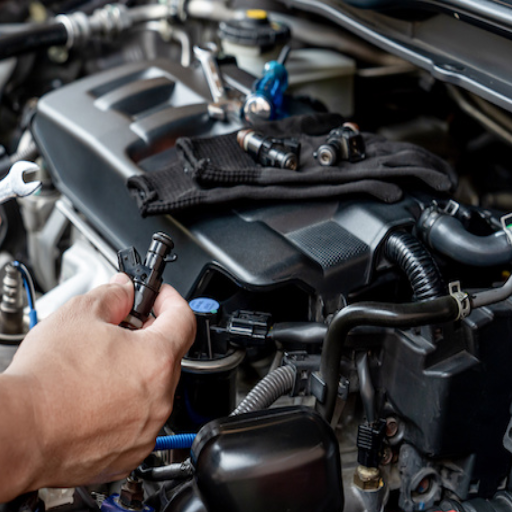
The first step to alleviate any issues with the fuel injectors is to do a little hunting for the typical red flags, such as the engine’s inability to idle evenly or efficiently sipping less fuel than before, or the engine requiring more time to start. After that, run down the potential causes of these issues, such as our clogged injector, any mix-up, injectors leaking, or maybe magnetism issues. In most cases, obstructions in the fuel injectors are removed through regular cleaning. However, if the trouble continues, fuel injector cleaners can be utilized, or a specialist can be asked to go and either check, rebuild, or replace the impaired injectors. It is essential to fulfill injector maintenance requirements to avoid injector troubles in the long run.
How to Clean Fuel Injectors Effectively
Cleaning fuel injectors is quite a straightforward procedure to optimize engine functionality and fuel consumption within minutes. A person interested in optimizing fuel injectors can achieve this in three steps. Begin by procuring a fuel injector cleaner that is appropriate for your car. Once you have the cleaner, sterilize your car’s fuel tank and clean the system. At this time, the tank should have almost no fuel so that when fresh fuel is added after washing, it will not be intermingled with the cleaning solution. Administer the recommended dosage per the manufacturer’s prescription. It is usually advisable to refill the car’s tank with clean fuel and add the cleaner after several days while driving. Run the vehicle as usual so the cleaner can work its way down the system, cleaning and removing unwanted dirt.
If there are even more serious blockages, removing the injectors and cleaning them manually can do the trick. This method usually entails immersing the injectors in the cleaning solution or using an ultrasonic cleaner. It is highly recommended that you follow the guidance in the car’s user manuals and seek proper help from an auto mechanic when cleaning the injectors yourself.
But also remember to keep the injectors clean and running by only using quality gasoline and performing intermittent maintenance. This technique helps keep the injectors running smoothly and avoids problems with expanding injectors.
What Are Common Clog Issues with Fuel Injectors?
It’s the clogs and the contaminants that cause inefficiency. Impaired fuel flow due to uneven fuel distribution, running too rich or too lean, engine misfire, and engine strain are among the most common issues. Beyond this, when the injector’s inauspicious spraying goes unchecked, this is the most common cause of poor quality combustion and thus of any automobile operation in general. Transporting pollutants such as debris or rust from the fuel tank only worsens the clog. It necessitates the installation of more clogs, which can lead to cleaning interventions or the need for replacement, which occur more often. Putting the best effort into engaging in prevention through fuel additives and refining fuel nutrition will be beneficial.
When to Consider New Fuel Injectors
Replacing fuel injectors may be necessary when cleaning or using additives fail to resolve challenges. A common sign that calls for new injectors would be having ignition misfires that persist, inconsistent idle, or even heightened fuel consumption. If the car does not start easily, has jerky movements on the road, or emits more smoke than usual, you could also attribute this to injector problems. In no case will the broken, leaking, or damaged injectors be repaired as new. Early intervention in these situations allows the damaged injectors to be replaced, enhancing the engine’s operation and preventing further costs. It is, however, advised to always reach a trained and experienced technician who will make a diagnosis and ensure replacement.
How Can You Prevent Future Fuel System Clogs?

It is essential to service your fuel system regularly to avoid obstructed sections later on. It is advisable to purchase untainted fuel to ensure no harmful impurities and to cleanse the fuel pump occasionally. Change the fuel filter according to the manufacturer’s instructions to prevent problems from occurring. It is critical not to allow the fuel tank’s content level to drop too low, as this will likely stir up the sediments at the bottom of the tank, ending up in the fuel line. On the other hand, timely measures like checking the equipment by an expert can be taken to maintain the fuel feeding system efficiency.
What Types of Fuel System Additives to Use
Numerous fuel-system additives are engineered to remedy particular ailments while bolstering overall engine function. Each variety targets a different vulnerability within the combustion circuit.
Fuel-injector cleaners, for instance, dissolve carbon crusts that clog nozzle tips and distort the spray pattern. The result is smoother idle speed and the restoration of lost miles per gallon.
Fuel stabilizers suit automobiles that spend months in a garage; they thwart oxidation and curtail the formation of gummy residues that would otherwise foul the pump. The long-term safeguard saves money when the vehicle is finally restarted.
Octane boosters lift a tankful’s rating, easing pre-ignition rattle in motors tuned for premium grade gasoline. Racing applications often call for this quick octave jump after a hard lap.
Complete fuel-system detergents merge the talents of several cleaners, scrubbing injectors, carburetors, valves, and even the far recesses of the chamber. One bottle can overhaul a neglected system more cost-effectively than shop labor.
Engineers always caution drivers to heed the owner’s manual before dosing any additive; modern sensors may reject treatments that exceed manufacturer thresholds. Selecting an industry-tested formula keyed to a given problem pays dividends in longer component life and steady peak performance.
How Regular Maintenance Helps Prevent Clogged Fuel Systems
Preventative maintenance is necessary to avoid dirt in fuel systems due to the heart beating in the performance of your car engine. Standard procedures include changing air filters after removing particles to introduce a cleaned stream into fuel injectors. Removing these deposits using good fuel additives applied as part of normal fuel usage or as required is possible. This is supplemented by checking and replacing spark plugs, air filters, and oil at the right time within the given intervals. This prevents carbon from building up, which is the precursor to the fuel systems becoming blocked. These interventions improve fuel use, increase the engine’s capability, and reduce the cost of service in the long term, as many repairs are minimal instead of corrective.
What Role Does Gas Tank Cleanliness Play?
The interior condition of a gasoline tank plays a surprisingly significant role in the well-being of a car’s entire fuel network. As miles accumulate, bits of rust, silt, and stray debris can settle to the bottom and be swept into fuel lines or, worse, into the injectors themselves. A tank kept free of such contaminants permits gasoline to flow freely and guards vital engine hardware against abrasive surprises. Periodic inspection and flushing, though sometimes ignored, restore clean surfaces and keep pump workload in check so fuel economy stays close to factory estimates. Quality gasoline and timely filter changes act as daily insurance, sparing owners the expense and hassle of far-reaching repairs.
Reference Sources
Biodiesel Effects on Fuel Filters: Assessment of Clogging Characteristics
Effects of Minor Constituents on Cold Flow Properties and Performance of Biodiesel
Combining Case-Based Reasoning, Explanation-Based Learning, and Learning from Instruction
Frequently Asked Questions (FAQs)
Q: What are the initial steps to unclog a fuel dispenser?
A: Start by identifying the line from the tank to the dispenser. Ensure all connections are secure and check for any visible debris or blockages. It’s crucial to take the fuel line and inspect it for any signs of damage or dirt.
Q: How can I safely clear fuel from the dispenser?
A: To clear fuel safely, ensure you work in a well-ventilated area. A fuel transfer pump can help suck old gas out of the tank, avoiding spillage and ensuring that the gas is moved efficiently.
Q: What tools are needed to unclog a fuel dispenser?
A: You will need basic tools, such as rubber gloves, a fuel transfer pump, and a carb cleaner. These can help clear any dirt or debris clogging the dispenser. Additionally, a glass container can help observe the clarity of the drained fuel.
Q: Can carb cleaner be used to unclog fuel dispensers?
A: Carb cleaner can remove any residue or buildup in the fuel lines. It effectively dissolves dirt and clears any blockages within the dispenser mechanism.
Q: How often should I check for clogs in a fuel dispenser?
A: Regular maintenance is key. It is advisable to check for clogs every few months, especially if you’ve noticed any issues in fuel flow or if the dispenser has been sitting idle for an extended period.
Q: Is it necessary to replace parts when unclogging a fuel dispenser?
A: In some cases, if the parts are too dirty or damaged, they may need to be replaced. Rubber seals and lines should be inspected for wear and tear. If unsure, consulting with a professional or visiting an AutoZone for advice may be beneficial.
Q: Are there any mechanical solutions to prevent clogging?
A: Regular mechanical maintenance, such as cleaning and replacing filters, can significantly reduce the risk of clogging. Ensuring that only clean fuel is used and the dispenser is debris-free can also help.
Q: Can I buy a cheap tool to help with unclogging?
A: Yes, many affordable tools are available to assist in unclogging a fuel dispenser. A fuel transfer pump is a cheap and effective solution for removing old gas from the tank.
Q: What should I do if I don’t feel comfortable unclogging the dispenser myself?
A: If you’re uncomfortable performing the task, it’s best to consult a professional mechanic. They have the experience and tools to safely and effectively unclog the fuel dispenser.
Q: Why is it essential to address a clogged fuel dispenser promptly?
A: Addressing a clogged fuel dispenser promptly ensures your vehicle runs smoothly and efficiently. Ignoring the issue can lead to poor performance, increased fuel consumption, and potential damage to other components. Thanks for understanding the importance of timely maintenance.

